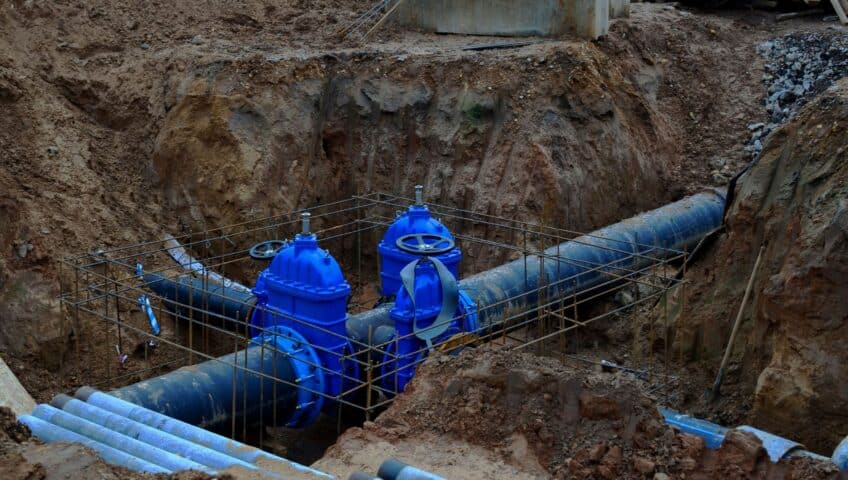In Port Moody, BC, developing a construction project involves meeting a wide array of regulations. One of the most crucial aspects is ensuring that sanitary systems are compliant with local laws. Proper sanitary systems are vital for health, safety, and environmental protection. They manage waste effectively, preventing contamination of natural water sources and maintaining public health standards.
The regulations governing these systems are designed to ensure they function efficiently and safely. Understanding these rules is essential for any developer aiming to complete a project smoothly and within legal requirements. Failure to comply can result in significant delays, fines, or even the halting of construction.
Navigating the complexities of sanitary system regulations requires careful planning and execution. This includes knowing the essential components of a compliant system and anticipating potential challenges. By doing so, developers can avoid common pitfalls and ensure their projects progress without unnecessary hitches.
In this article, we will cover the key aspects of BC sanitary system regulations, explore the main components required for compliance, discuss challenges and solutions, and provide best practices for developers. Understanding these elements will help in achieving a successful and legally compliant construction project.
Understanding BC Sanitary System Regulations
Navigating British Columbia’s sanitary system regulations is crucial for developers. These regulations ensure that sanitary systems are safe, efficient, and environmentally friendly. Compliance is not just a legal requirement but also a responsibility to public health and the environment.
Firstly, developers must familiarise themselves with the British Columbia Building Code (BCBC). This code outlines the standards for all building systems, including sanitary systems. It covers aspects like the materials to be used, the layout of the system, and the methods of waste disposal.
Health and safety regulations also play a significant role. These rules are designed to prevent contamination and ensure that waste is managed properly. They mandate that sanitary systems must be robust enough to handle daily waste output without failure or leakage.
Environmental laws in BC are stringent, particularly around water management. Developers need to ensure that their sanitary systems do not harm natural water sources. This involves correct installation and maintenance practices to prevent leaks and overflows that could contaminate groundwater or nearby bodies of water.
Permits are another critical aspect. Before starting any construction, developers must obtain the necessary permits from local authorities. These permits usually require detailed plans and possibly inspections to ensure the proposed system meets all regulatory standards.
Key Components of a Compliant Sanitary System
A compliant sanitary system has several essential components that ensure it meets BC regulations. Each part must be carefully planned and installed to function effectively and safely.
- Pipes and Fittings: The pipes carry waste from the building to the sewer system. Using high-quality, durable materials is essential to prevent leaks and ensure longevity. Fittings must be securely connected to avoid any gaps that could lead to contamination.
- Sewer Lines: These lines transport waste from individual properties to the main sewer system. They need to be correctly sloped to ensure smooth flow, reducing the risk of blockages. Regular inspections are necessary to identify and fix any issues promptly.
- Ventilation: Proper ventilation is crucial to prevent the build-up of harmful gases in the system. Vents allow gases to escape safely, avoiding pressure build-up that could lead to leaks or ruptures.
- Septic Tanks: In areas without access to a municipal sewer system, septic tanks are used. These tanks must be appropriately sized for the property’s expected waste output and require regular maintenance to function correctly.
- Manholes and Access Points: These provide entry for inspections and maintenance. Properly placed access points make it easier to perform routine checks and address any problems without extensive digging.
- Backflow Prevention Devices: These devices prevent wastewater from re-entering the building in case of a blockage or overflow in the main sewer system. Installing these devices is crucial to protect against contamination and maintain hygiene standards.
By incorporating these key components, developers can ensure that their sanitary systems are compliant with BC regulations and capable of handling the demands placed on them. Proper planning and installation of each element are vital for the system’s overall efficiency and reliability.
Common Challenges in Meeting Regulations and How to Overcome Them
Meeting BC sanitary system regulations can pose several challenges for developers. Understanding these hurdles in advance and knowing how to tackle them is key to ensuring compliance and avoiding costly setbacks.
- Complex Design Requirements: Designing a sanitary system that adheres to all regulations can be challenging. These designs must account for various factors, including site-specific conditions, future capacity needs, and environmental concerns. Hiring experienced engineers who are familiar with BC regulations can help navigate these complexities.
- Obtaining Permits: The process of securing permits can be cumbersome and time-consuming. Documentation must be thorough and accurate to meet regulatory requirements. Engaging with local authorities early in the planning process and maintaining clear communication can streamline permit approval.
- Material and Equipment Standards: Using substandard materials or equipment can lead to non-compliance. Always source high-quality materials and ensure they meet all relevant standards. This includes pipes, tanks, and fittings. Regular inspections and quality checks during construction help prevent compliance issues later on.
- Environmental Impact: Sanitary systems must not harm local ecosystems. This entails careful design and implementation to prevent leaks, overflows, and other issues that could affect the environment. Employing environmentally-friendly practices and materials can help mitigate this challenge.
- Maintenance and Monitoring: Even after installation, maintaining compliance is an ongoing effort. Regular maintenance and monitoring are essential to ensure the system remains functional and compliant. Implementing a scheduled maintenance plan and employing qualified personnel for inspections can address this effectively.
By proactively addressing these challenges, developers can ensure smoother project execution and maintain compliance with BC sanitary system regulations.
Best Practices for Developers to Ensure Compliance
Developers can adopt several best practices to ensure their sanitary systems comply with BC regulations. Following these guidelines can result in more efficient project execution and long-term system reliability.
- Early Planning: Start planning sanitary systems early in the project timeline. This allows sufficient time to address any regulatory requirements and obtain necessary permits without delaying the project.
- Engage with Experts: Work with professionals who have expertise in BC sanitary regulations. Experienced engineers, consultants, and contractors can provide valuable insights and ensure that the system design and implementation meet regulatory standards.
- Use Quality Materials: Always use high-quality materials that comply with local standards. This includes pipes, fittings, tanks, and other components. Quality materials are crucial for system durability and compliance.
- Regular Inspections: Conduct regular inspections during and after installation. This helps identify and address potential issues promptly, ensuring continuous compliance. Inspections should be carried out by qualified personnel.
- Maintain Clear Communication: Keep open lines of communication with local authorities and stakeholders. This facilitates smoother permit processes and ensures that any regulatory updates are promptly incorporated into the project.
- Implement a Maintenance Schedule: Establish a regular maintenance schedule for the sanitary system. Regular checks and servicing help maintain system functionality and compliance over time.
- Document Everything: Maintain thorough documentation of all phases of the project. This includes design plans, permits, inspection reports, and maintenance records. Proper documentation can be critical during audits or inspections.
By following these best practices, developers can significantly enhance their chances of meeting all regulatory requirements and ensuring the long-term success of their sanitary systems.
Conclusion
Navigating the intricate world of BC sanitary system regulations is crucial for the success and legality of any construction project in Port Moody. Understanding the regulations, knowing the key system components, anticipating challenges, and following best practices all contribute to achieving compliance and avoiding unnecessary setbacks.
Developers who invest time and resources in proper planning, use quality materials, engage with experienced professionals, and establish regular maintenance routines will find themselves better positioned to meet these demanding requirements. These actions not only ensure regulatory compliance but also contribute to the overall safety and sustainability of the projects.
At New Wave Earth Works, our team specialises in guiding developers through the complexities of sanitary system regulations, guaranteeing both functionality and compliance. To ensure your project meets all BC regulations, contact New Wave Earth Works today.


